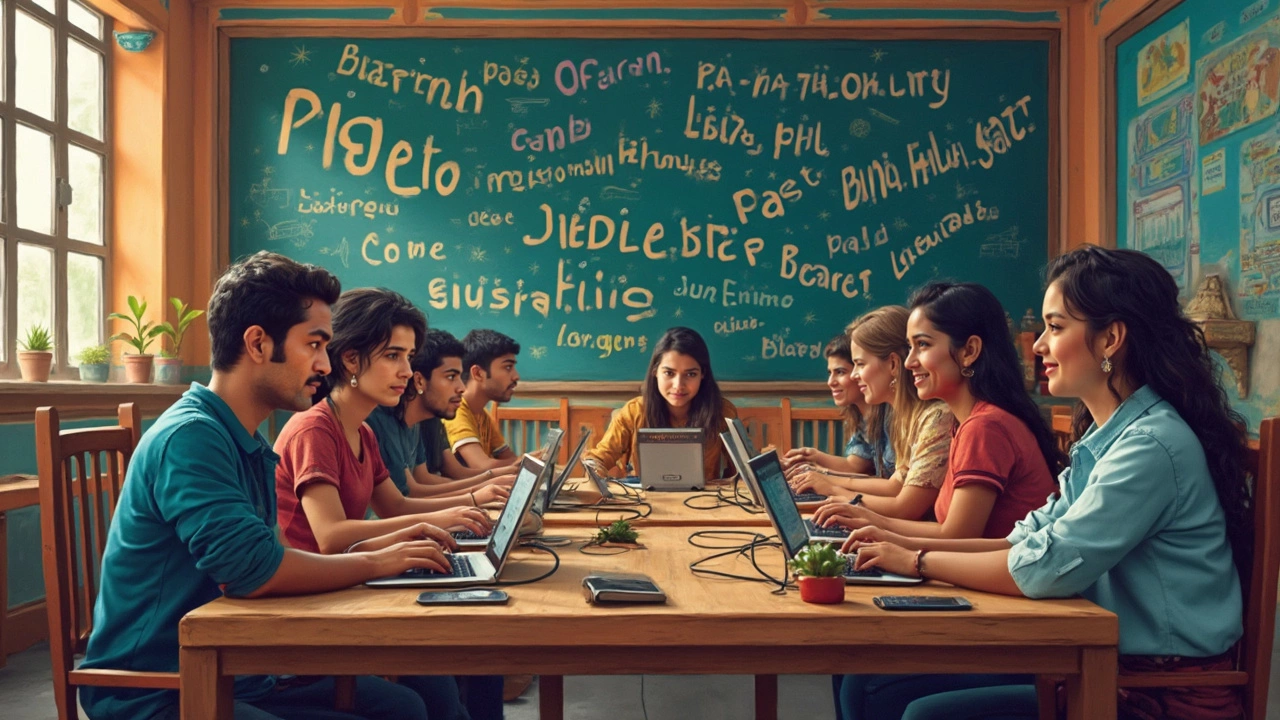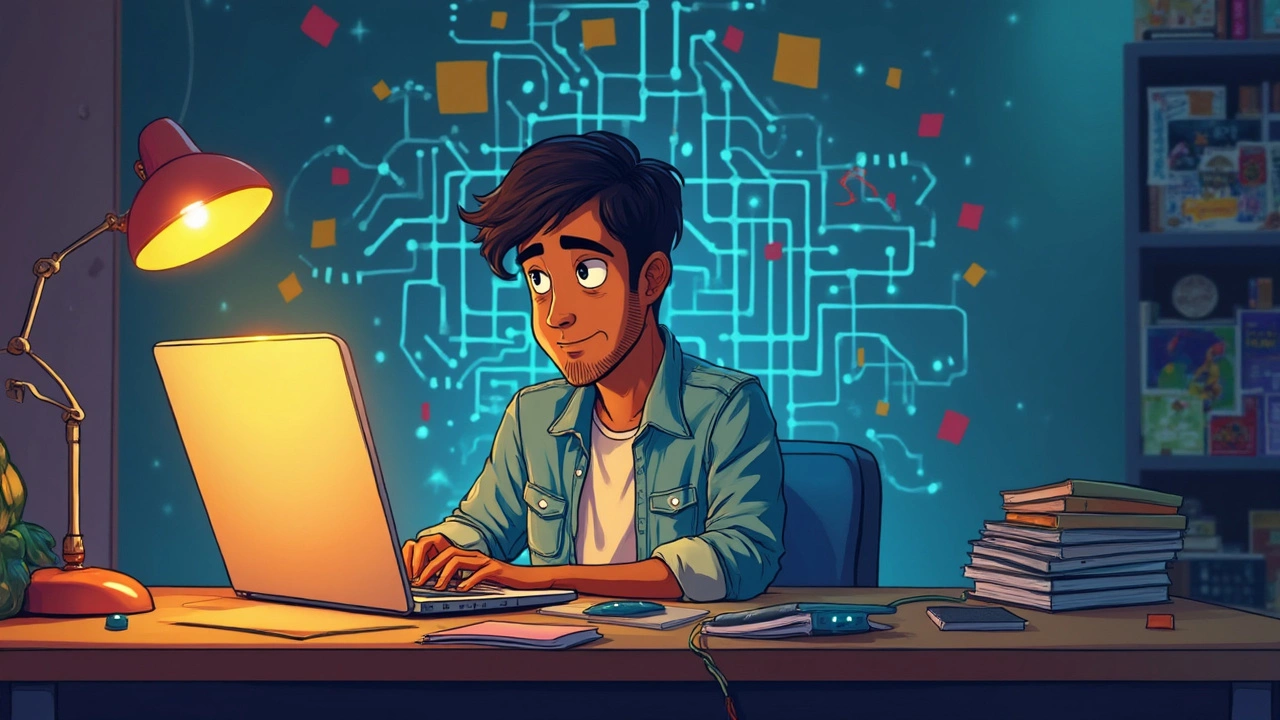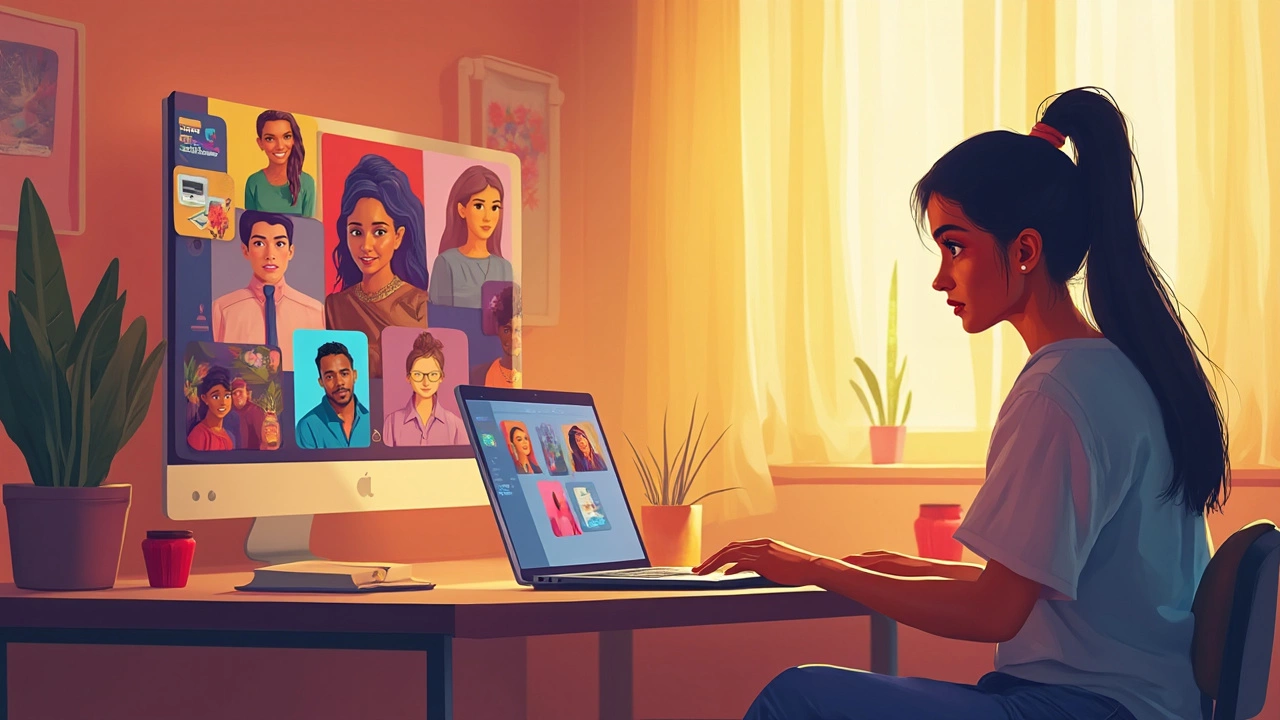So you're thinking about diving into coding, but not quite sure where to begin? Don't worry, you're not alone. A lot of folks get overwhelmed by all the jargon and tricky concepts. But guess what? Coding isn't some mystical art reserved for geniuses. It’s more like a step-by-step process, much like building with LEGO bricks—one piece at a time.
First things first, you'll need to pick a programming language. There are tons out there, each with its own vibe and use cases. Think of it like choosing a new language to learn—Spanish, French, or maybe Klingon? Jokes aside, starting with a beginner-friendly language like Python or JavaScript is usually the way to go. They're versatile, popular, and have loads of resources for beginners.
- Choosing the Right Language
- Setting Up Your Environment
- Understanding Basic Concepts
- Writing Your First Code
- Testing and Debugging
- Exploring Projects
- Continuous Learning
Choosing the Right Language
Alright, let's face it—picking the right programming language is like choosing your favorite ice cream flavor. It can be a bit overwhelming with all the options. But don't panic; some languages are tailor-made for beginners and can make your coding journey a smoother ride.
Generally, you'll want to kick things off with a language that's not too complex but widely used, like Python. Why? It's simple, readable, and used in everything from web development to data analysis. It’s like the Swiss army knife of programming languages. Plus, there’s a massive community out there ready to help you with any hiccups.
Or maybe you're interested in web stuff? Then JavaScript is your go-to. It's the backbone of web development and lets you add interactive elements to websites. Pretty cool, right?
If you’re aiming for games or apps, C# could be the way forward, especially if you’re looking into game development frameworks like Unity.
Here's a quick rundown of some popular languages and their use:
- Python - Great for beginners, data analysis, and web development.
- JavaScript - Essential for web development; it’s everywhere online.
- Java - Solid choice for enterprise-level applications and Android apps.
- C# - Ideal for game development and Windows apps.
- Ruby - Known for its elegant syntax, often used in web development.
No matter what you pick, remember this: The best language for you is the one that aligns with your goals and sparks your interest. Don’t stress too much about choosing the 'perfect' language at the start. Learning one makes picking up others easier down the line. So, grab that proverbial scoop and enjoy the journey!
Setting Up Your Environment
Alright, you've chosen your programming language. What's next? It's time to get your coding environment up and running. This is like prepping your kitchen before you start cooking—a little setup now saves headaches later.
First up, installing a code editor is a must. Think of it as your cooking utensils. Without them, you're not gonna get far. If you're starting with Python, tools like PyCharm or Visual Studio Code (VS Code) do the trick. Working with JavaScript? Try out Atom or VS Code; they're popular for a reason.
Next, you’ll want to install any necessary platforms or frameworks your chosen language uses. For Python, make sure you have Python itself installed—sounds like a no-brainer, but it’s an easy step to miss. JavaScript lovers, you'll often be working with Node.js for back-end stuff, so grab that while you're at it.
If you're a fan of organized chaos like me, using a version control system from the start—like Git—is a game-changer. Git helps keep track of your changes. Plus, if you mess up, you can roll things back. It's like a time machine for your code.
Lastly, don't forget to explore some online resources. Sites like GitHub are filled with both beginners and pros sharing projects. Cloning a repository can give you a peek into real-world projects and contribute to your learning journey.
Setting up your environment might feel like a bit of paperwork, but trust me, once it's all arranged, you'll be coding smoothly in no time.
Understanding Basic Concepts
Once you've picked your language, it's time to dive into the core ideas that make up coding. Think of these as the foundation bricks in your coding structure. Get these basics right, and you'll have a much smoother ride as you move on to more complex stuff.
First up, pay attention to variables. They’re like boxes that hold information for your programs to use, and they're everywhere in programming. You'll usually give them a name and decide what type of data they hold, such as numbers or text. Think of creating a variable as giving your data a home.
Next, you've got loops. These are powerful. They let you repeat certain actions until a particular condition is met. Picture it like being able to tell your program to 'keep doing this until you hit a certain number.' Mastering loops saves time and makes your code efficient.
Don't forget about conditionals. These are like decision-makers for your code. Using statements like 'if' and 'else,' you can program your software to behave differently depending on certain conditions. It's what makes your code flexible and adaptable!
A key piece of the puzzle is understanding functions. They help organize your code into reusable chunks. Imagine them as mini-programs within your program that you can call on whenever you're doing a specific task. They'll help keep your programs neat and tidy.
- Variables: Store data to be used later.
- Loops: Repeat actions efficiently.
- Conditionals: Make decisions based on conditions.
- Functions: Reusable code fragments.
It’s also useful to touch on the concept of data structures. Things like arrays and lists are essential for organizing data. They’re like digital filing cabinets, helping you keep your information in order and easy to access.
As you start wrapping your head around these concepts, practice is your best friend. There's no substitute for rolling up your sleeves and getting your hands dirty. And remember, every coder hits roadblocks. The magic happens when you figure out how to hurdle them.

Writing Your First Code
Alright, you've picked out a language, set up your tools, and now it's time to dive in—actually writing some code! This is where things get exciting. Remember, coding is just about giving the computer instructions in a language it understands. These instructions are what we call 'code'.
So, where do you begin? A great starting point for beginners is writing a simple 'Hello, World!' program. It's like a programmer's rite of passage. Here's how you can do it in Python:
print('Hello, World!')See how simple that is? Just one line of code to display a message on the screen. If you're using JavaScript, it would look something like this:
console.log('Hello, World!');Both are pretty straightforward, right? These tiny programs give you a taste of what it's like to communicate with a computer. It's a small step, but a significant one.
Of course, as you get more comfortable, you'll start writing longer and more complex pieces of code. It helps to break down your coding tasks into smaller parts or steps, which can make things feel a lot less daunting.
- Understand the problem: Know what you're trying to solve before you jump into coding.
- Plan your steps: Outline what needs to be done. Sketch it out or write pseudocode.
- Write the code: Use your plan as a guide and start coding away.
- Test frequently: Run your code often to catch mistakes early.
Some folks find it helpful to keep a coding journal. Jot down what you learned from each session. It's a good way to track your progress and understand mistakes, too.
Just remember—practice makes perfect. The more you code, the more intuitive it becomes. Don’t be afraid to experiment or make mistakes. It's all part of the process, and each mistake is a step closer to mastering coding skills.
Testing and Debugging
Alright, so you’ve written some code. What’s next? Time to see if it actually works! This is where testing and debugging come into play. It's like the quality control of coding—catching those pesky bugs and refining your work.
First up, you need to test your code's functionality. Basic idea? Run your project and see if it does what you expect. If anything feels off, it likely needs a little fixing. To make this process efficient, here are some tips:
- Automated Tests: Use tools like Jest for JavaScript or Pytest for Python to run tests automatically. Saves time and catches bugs that manual testing might miss.
- Unit Testing: Test individual parts of your code independently to ensure each part functions correctly on its own.
- Integration Testing: Once you're confident in your individual parts, see how they work together. It’s like making sure a puzzle fits correctly when all the pieces are combined.
Now, every coder's least favorite part: debugging. It's basically playing detective with your code. The key is not to get frustrated. Here’s how to make it a bit easier:
- Read Error Messages: They’re like the GPS directions you curse at but actually need. The message often points you exactly where the problem is.
- Use Debuggers: Tools like VSCode's debugger can step through your code line by line, letting you see exactly what's happening.
- Console Logs: Sprinkling some console logs throughout code gives you real-time updates on what's going on. It's like checking breadcrumbs to see where things went wrong.
And hey, everyone makes mistakes. Even the best coders spend loads of time debugging. It’s all part of the journey. The more you practice, the sharper your eye will get for spotting those sneaky bugs. Happy coding!
Exploring Projects
Alright, so you've got the basics of coding down, and you're eager to put your new skills to the test. This is where exploring projects comes into play. Tackling real-life coding projects is like upgrading from a driving simulator to getting behind the wheel. It’s hands-on and thrilling.
Projects not only help you apply what you’ve learned, but they also reveal gaps in your knowledge and refine your problem-solving skills. Start small, like creating a simple calculator or a to-do list app. These may seem basic, but they incorporate many programming basics and give you a solid foundation.
“Programming isn’t about what you know; it’s about what you can figure out.” – Chris Pine, Author of 'Learn to Program'
Here’s a simple path to follow when exploring projects:
- Choose Your Project: Pick something that excites you. Maybe a web-based game or a budget tracker. The goal is to stay engaged.
- Plan It Out: Break down the project into smaller tasks. It’s like solving a puzzle, piece by piece.
- Start Coding: Begin with the simpler parts. As you gain confidence, tackle the tougher sections.
- Test and Debug: Don’t stress if your code isn’t perfect on the first try. Testing is where you learn the most.
Fun fact: Companies like Google let their employees dedicate time to personal projects. It encourages innovation and keeps the coding spirit alive!
Once you feel comfortable with small projects, step up to something more complex. And remember, the internet is overflowing with free resources and communities eager to help budding coders like you. Dive in and enjoy the process of building. You might find that creating something from scratch is one of the most rewarding experiences in this learn coding journey.

Continuous Learning
Alright, so you’ve mastered the basics, but the coding world is always on the move. That's where continuous learning comes in. It’s super important if you want to keep up with new trends and advancements. Remember, even the pros are always picking up new tricks.
One way to keep your skills sharp is by following coding communities online. Websites like Stack Overflow or GitHub are great for diving into real-world problems and seeing how others solve them. You can even contribute to open-source projects, which is a fantastic way to learn from more experienced coders while giving back.
Taking part in coding classes or workshops, whether locally or online, is another way to expand your horizon. Platforms like Coursera, Udemy, or freeCodeCamp offer a wide range of courses that delve into advanced topics or new languages you might be curious about.
Books and blogs are treasure troves of information. Following thought leaders in the tech industry or subscribing to newsletters can keep you updated on what's hot and what's not. Occasionally, a good old-fashioned book can offer deep insights that online articles might skim over.
Also, let’s not forget about coding challenges. Websites like HackerRank or LeetCode serve up problems that might make you scratch your head at first, but they're excellent for honing your problem-solving skills.
Here's a little fun fact: Did you know that Python was created back in 1991 and is still one of the most popular languages today? It's a testament to how some things stay relevant, but also a reminder that the tools we use adapt and grow.
So, keep learning, stay curious, and remember that being a programming whiz is about continuous learning and evolving along with the technology.


